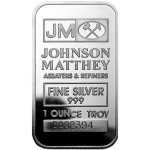- GOLD IRA
- Download Our 2024 Precious Metals IRA Investor’s Guide.
Click Here  Gold IRA
Gold IRA
 Investing
Investing
-
- CRYPTO IRA
- PRICES & STATS
- RETIREMENT PLANS
- BLOG
 Questions? Call (888) 820 1042
Questions? Call (888) 820 1042
What New Price Mechanism Means for Silver, Other Metals
Disclosure: Our content does not constitute financial advice. Speak to your financial advisor. We may earn money from companies reviewed. Learn more
Last Updated on: 26th January 2015, 04:50 pm
This month ushered in a new era in how the daily spot price of silver is determined. For the previous 117 years, silver prices were set by a bank-led, closed-room process whereby leading financial officials would make educated guesses at changes in the supply and demand of the white metal.

Deutsche Bank, one of the three silver price fix banks, abandoned the process in January. A new method had to be found, and preferably one that was more transparent and less vulnerable to manipulation.
The new process is based on an electronic auction that is “run” by CME Group, Inc. and Thomas Reuters Corp. Each day, digitally entered orders offer a starting price for silver. If the buy and sell orders do not match each other, a sophisticated algorithm recommends a new price. Each new price offer signals the end of a “round”, and each round lasts approximately 30 seconds.
What this Means for Silver
Silver is a $5 trillion commodity worldwide that has (like all investment metals) seen enormous price spikes since the Great Recession of 2007-09. Consequently, shifts in silver prices are very important. Many market experts believe that silver could benefit from this new, transparent process.
However, prices aren’t really being determined in a drastically new way. This new electronic system is a faster, more computer operated version of the previous system. In the short run, prices shouldn’t see any significant gains or losses on account of a new price mechanism.

What does matter is that silver prices are now more secure long-term. Silver just became a healthier buy. Why?
Banks are going to have a tougher time manipulating the spot price of silver, hurting investors and profiting themselves. More importantly, a transparent, electronic system is less of a target for governments.
The three primary institutions involved in the old Silver Price Fix — Deutsche Bank along with HSBC and Bank of Nova Scotia — are all politically connected organizations. That means that they are all subject to influence from government officials and central banks.
If you own silver, one of the primary benefits is that you have an asset that is far less subject to short-sighted and self-serving politicians. With any luck, gold, platinum and palladium are all going to see similar shifts towards long-term security.
What this Means for Other Metals
Gold is the most circulated precious metal in the world. Roughly $18 trillion moved in global markets last year alone (more than three times the amount of silver). The spot price of gold is currently determined in the same way that silver used to be: a bank operated daily price fix.
The enormous popularity of the new silver scheme is putting pressure on the companies that run the other metal price mechanisms.
This month, the London Bullion Association has been soliciting proposals to find a new institution to replace Deutsche Bank (who left the gold fix as well). The ultimate goal is to unveil a revamped fix for gold, however it remains to be seen if they will introduce a method as transparent and automated as the new silver system.

Change in the gold process is also being driven by the $44 million fine imposed on Barclays earlier this year. Clearly, the old system has its faults.
Platinum and palladium fixings are in the same process. Ultimately, a move towards automation and transparency could help all three metals more accurately reflect true market prices.
More importantly, investors could gain access to an even stronger haven from government influence. The future for precious metals is looking very secure.
How to Secure Your Future with Precious Metals
For many, silver and other precious metals represent a way to transfer their wealth into real assets which have survived and thrived for thousands of years. When the U.S. government took the reigns off of gold and allowed investors to own it again after the 1970s, the spot price jumped from $35 an ounce to $850. Now these metals are even further removed from government influence.
To learn about the advantages of owning precious metals and how to add them to your portfolio, request our Free Investor’s Kit today.



 Silver
Silver Gold
Gold Platinum
Platinum Palladium
Palladium Bitcoin
Bitcoin Ethereum
Ethereum

 Gold: $2,387.15
Gold: $2,387.15
 Silver: $27.92
Silver: $27.92
 Platinum: $931.02
Platinum: $931.02
 Palladium: $903.43
Palladium: $903.43
 Bitcoin: $67,910.26
Bitcoin: $67,910.26
 Ethereum: $3,278.81
Ethereum: $3,278.81